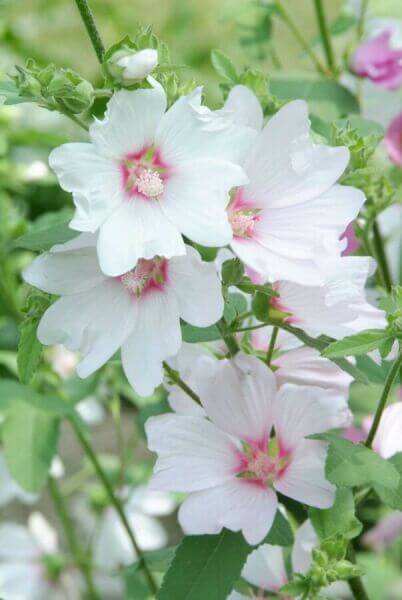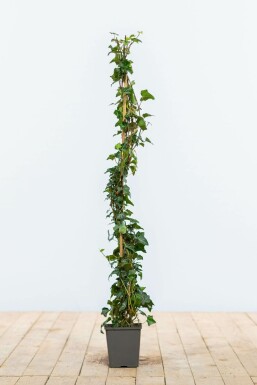Hedging Plants For Architectural Interest
Hedging Plants For Architectural Interest
Blog Article
Hedge Plants For Cottage Gardens
Enhance your garden's allure with lavish hedge varieties such as Yew (Taxus), Thuja, Laurel, Photinia, and Bamboo, commemorated for their structural stability and environmental benefits.
Yew and Thuja provide evergreen protection and winter strength, while Laurel uses fast development and broad, aromatic leaves.
Photinia adds seasonal beauty with its vibrant red foliage, and Bamboo provides a low-maintenance, serene atmosphere.
These hedges enhance air quality, decrease sound, and develop tranquil, private spaces.
Correct planting, spacing, and maintenance make sure energetic growth and eco-friendly consistency.
Explore how these lush varieties can raise your garden's appeal and wellness.
Key Takeaways
Transform Your Garden With Lush Hedge Varieties
- Select Yew for its thick, evergreen development and unparalleled longevity.
- Select Laurel for its quick development and broad leaves, ensuring quick personal privacy.
- Select Photinia for its lively seasonal foliage, which turns a striking dark red.
- Utilize Bamboo for a low-maintenance, winter-hardy hedge with aesthetic appeal.
- Space plants 2-3 per meter and prune routinely for optimum growth and health.
Popular Hedge Plants
When changing a garden with lush hedge varieties, it's important to consider popular hedge plants such as Yew, Thuja, Laurel, and Photinia due to their special characteristics and benefits.
Yew (Taxus) is extremely respected for its durability and thick, green development, making it a prime option for sustaining landscapes.
Thuja is noted for its evergreen foliage and robust winter durability.
Photinia includes seasonal vibrancy with red leaves that darken over time, creating vibrant visual appeal.
Laurel provides rapid growth and fragrant, broad leaves, suitable for fast privacy.
Furthermore, Bamboo is an exceptional option for ambiance, offering a low-maintenance, winter-hardy option that boosts the garden's visual with its sophisticated, swaying walking sticks.
These selections cater to a range of horticultural requirements and preferences.
Benefits of Garden Hedges
Garden hedges use a wide variety of benefits, making them a valuable addition to any landscape. These natural barriers are cost-effective to implement and supply considerable wind security, enhancing air blood circulation and adding to noise decrease. The thick foliage of hedges like Thuja and Beech ensures personal privacy by blocking visibility, developing a peaceful and secluded environment.
Hedges likewise play a vital role in microclimate regulation, supplying a stable environment that cultivates plant growth and minimizes temperature level fluctuations. Their complex leaf structures filter pollutants, enhancing air quality and contributing to a healthier garden community.
Moreover, hedges master noise reduction, soaking up and deflecting acoustic waves to lower ambient sound levels. This dual performance of providing both acoustic and visual privacy enhances the general harmony and aesthetic appeal of any garden.
Planting and Maintenance Tips
For an effective hedge, meticulous preparation of the planting area is vital. Ensure the soil has appropriate pH and drain to support strong root advancement.
Space the plants appropriately for the selected types. Water the hedge frequently during its preliminary development phase, adjusting as required with seasonal modifications.
Execute a organized pest control and disease prevention method, utilizing organic or chemical treatments when required. Frequently examine for aphids, mites, and fungal infections.
Apply mulch to maintain wetness and suppress weeds. Seasonal pruning promotes dense growth and air flow, vital for plant health.
Following these standards will assist you cultivate a lively, properly maintained hedge that boosts the beauty of your garden.
Spacing and Trimming Guidelines
Spacing and Trimming Guidelines
Proper spacing and trimming are crucial for cultivating healthy, visually appealing hedges. Adequate spacing ensures each plant receives sufficient nutrients, light, and air flow.
Follow these standards for optimum hedge upkeep:
- Spacing: Position hedge plants 2-3 plants per meter to motivate robust development.
- Pruning Methods: Regular pruning is important for preserving desired hedge height and shape. Trim brand-new development in summertime and cut back older wood throughout winter season.
- Seasonal Care: Adjust trimming techniques and schedules according to seasonal requirements to ensure plant health.
- Hedge Height: Routinely screen and cut to preserve the preferred hedge height and achieve uniform visual appeals.
Complying with these actions will guarantee your hedge prospers, improving both the appeal and functionality of your garden.
Choosing the Right Hedge
Picking the Right Hedge
Choosing the appropriate hedge involves assessing factors such as fully grown height, foliage density, and ecological resilience. Effective hedge plant selection requires comprehending each species' development qualities and site-specific adaptability.
For instance, Yew (Taxus) offers exceptional longevity and thick growth, while Thuja is notable for its winter season resilience. In addition, considering maintenance requirements is vital; fast-growing species like Laurel or Privet need regular cutting, whereas low-maintenance choices like Bamboo or Ivy may be more suitable for those seeking very little upkeep.
Environmental aspects such as soil type, light accessibility, and wetness conditions ought to likewise guide the selection procedure. This careful technique ensures the selected hedges will grow, providing both visual and functional advantages to the garden landscape.
Delivery and Planting Recommendations
To ensure your hedge plants flourish, they must be delivered by specialized couriers and planted immediately upon arrival.
Follow these necessary steps for successful planting:
- Soil Preparation: Enhance the soil with natural matter to improve drainage and nutrient content.
- Planting Depth: Produce a trench two times the width and equivalent to the depth of the root ball.
- Watering Strategies: Water completely after planting, keeping the soil consistently moist but not filled.
- Mulching: Use a layer of mulch to retain moisture and suppress weeds.
Client Assistance and Service
Offered the vital role of timely assistance in horticultural pursuits, our customer support team is offered 6 days a week through telephone, e-mail, and social networks to use skilled advice and swiftly deal with any concerns. Their commitment to fast reaction times guarantees client fulfillment by solving questions connected to plant health, optimum planting approaches, and upkeep schedules.

Within 24 hours
This extensive support group, enhanced by an excellent 9.3/ 10 consumer ranking, highlights our commitment to enhancing the gardening experience for every client.
Frequently Asked Questions
For How Long Does It Take for Hedge Plants to Establish?
Hedge plants typically require one to three years to become completely established, with the precise duration varying by species and growing conditions.
Effective care during this critical period is essential for robust development. Constant watering, vigilant weed control, and proper fertilizer application are essential in promoting strong root advancement.
For instance, fast-growing species like Laurel may establish quicker, while slower-growing ranges such as Yew may take longer. Persistent maintenance accelerates the facility procedure, resulting in healthy and thick hedges.
What Are the very best Hedge Plants for Personal Privacy?
The question of the best hedge plants for personal privacy includes assessing evergreen and deciduous options.
Evergreen hedges like Thuja, Laurel, and Cypress supply year-round protection, making sure constant privacy.
In contrast, deciduous hedges such as Beech use seasonal personal privacy, shedding leaves in colder months.
Secret upkeep tips for personal privacy hedges consist of regular cutting, fertilizing in spring, and appropriate spacing-- typically 2 to 3 plants per meter.
In addition, constant watering and diligent weed elimination are essential for promoting healthy, thick development.
Can Hedge Plants Attract Wildlife to My Garden?
Yes, hedge plants can bring in wildlife to your garden by offering necessary benefits like shelter, food, and nesting websites, consequently enhancing regional biodiversity. For instance, yew, holly, and laurel are exceptional for attracting birds, while ivy supports a range of insects.
Nevertheless, it's essential to keep in mind that there are some disadvantages, such as increased upkeep to manage insects and routine upkeep. Thoroughly selecting and preserving hedge ranges can help stabilize these disadvantages and advantages, ultimately promoting a sustainable and vibrant community in your garden.
Exist Any Flowering Hedge Plants Available?
Yes, there are flowering hedge plants offered that can boost the beauty of your garden.
For example, Elaeagnus, likewise referred to as Olive Willow, produces aromatic white flowers in the fall, adding a touch of beauty.
Photinia, another popular option, showcases lively red leaves that mature into a rich green, producing a vibrant visual result throughout the seasons.
To make sure these plants thrive, it's important to practice appropriate pruning strategies and seasonal upkeep, such as cutting new growth in the summer and cutting back in the winter.
These steps will assist preserve the health and visual appeal of your blooming hedges.
How Do I Avoid Bugs in My Hedge Plants?
To avoid bugs in hedge plants, use natural bug control approaches and keep proper hedge care. Present helpful pests like ladybugs, which victimize damaging bugs, to develop a well balanced environment.
Frequently check your hedges for indications of invasion and without delay get rid of any afflicted parts to avoid the spread. Guarantee the health of your hedges by applying balanced fertilizers and supplying appropriate water.
Use mulching to keep soil moisture and proper spacing to reduce plant tension and promote robust development. These practices collectively help in minimizing bug concerns and preserving a healthy hedge.
Conclusion
In essence, selecting the right hedge ranges such as Yew, Thuja, and Laurel can change any garden into a peaceful haven. These plants supply year-round greenery, enhance aesthetic appeal, and offer useful advantages like noise decrease and wind security.
Proper planting strategies, precise spacing, consistent watering, and seasonal cutting are crucial for optimal growth.
Reliable shipment services and professional consumer assistance ensure a smooth experience from purchase to planting, making it simpler than ever to raise your outside area.
Garden hedges offer a wide variety of benefits, making them a valuable addition to any landscape. These natural Article source barriers are affordable to carry out and supply significant wind protection, boosting air circulation and contributing to sound reduction. The thick foliage of hedges like Thuja and Beech ensures personal privacy by obstructing presence, producing a serene and remote environment.

Pruning Methods: Regular pruning is important for maintaining wanted hedge height and shape. Trim new development in summertime and cut back older wood during winter season.
Report this page